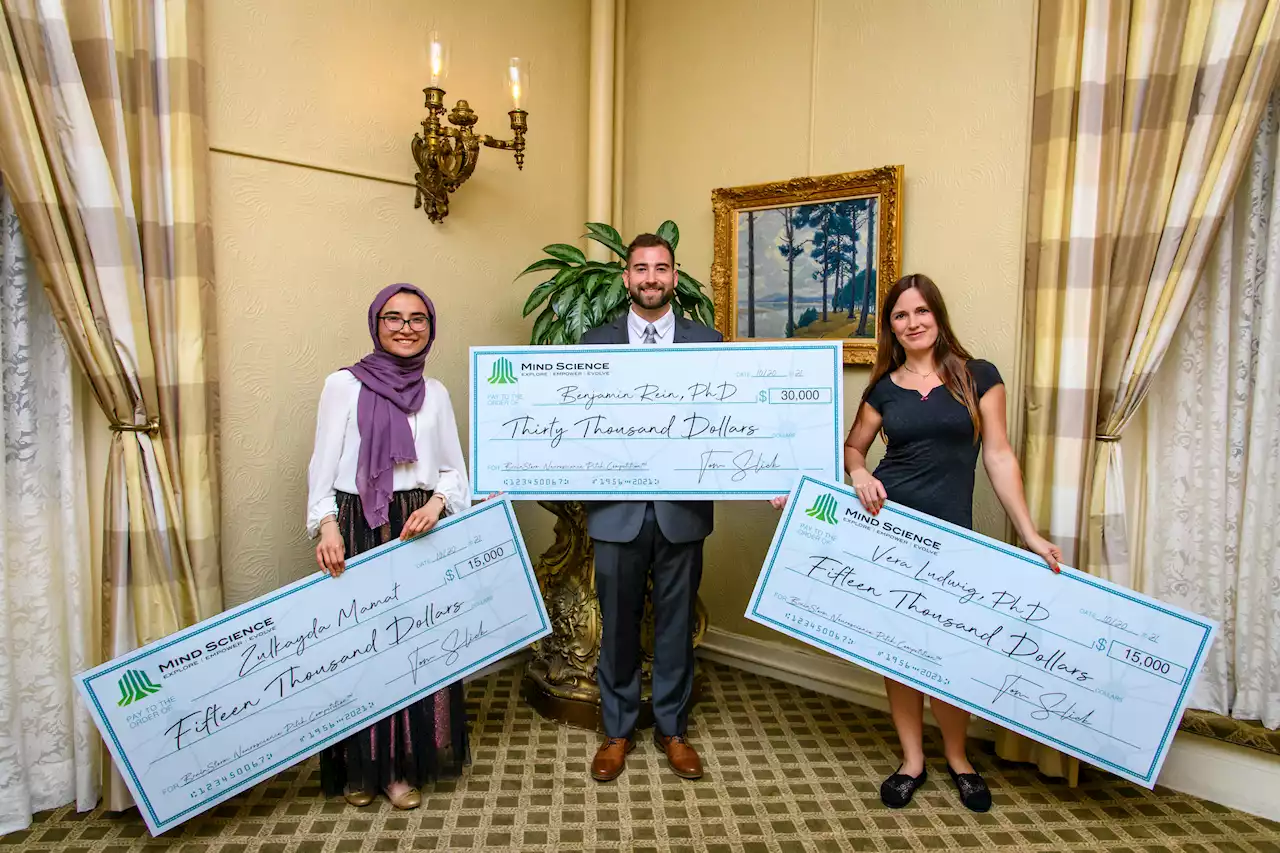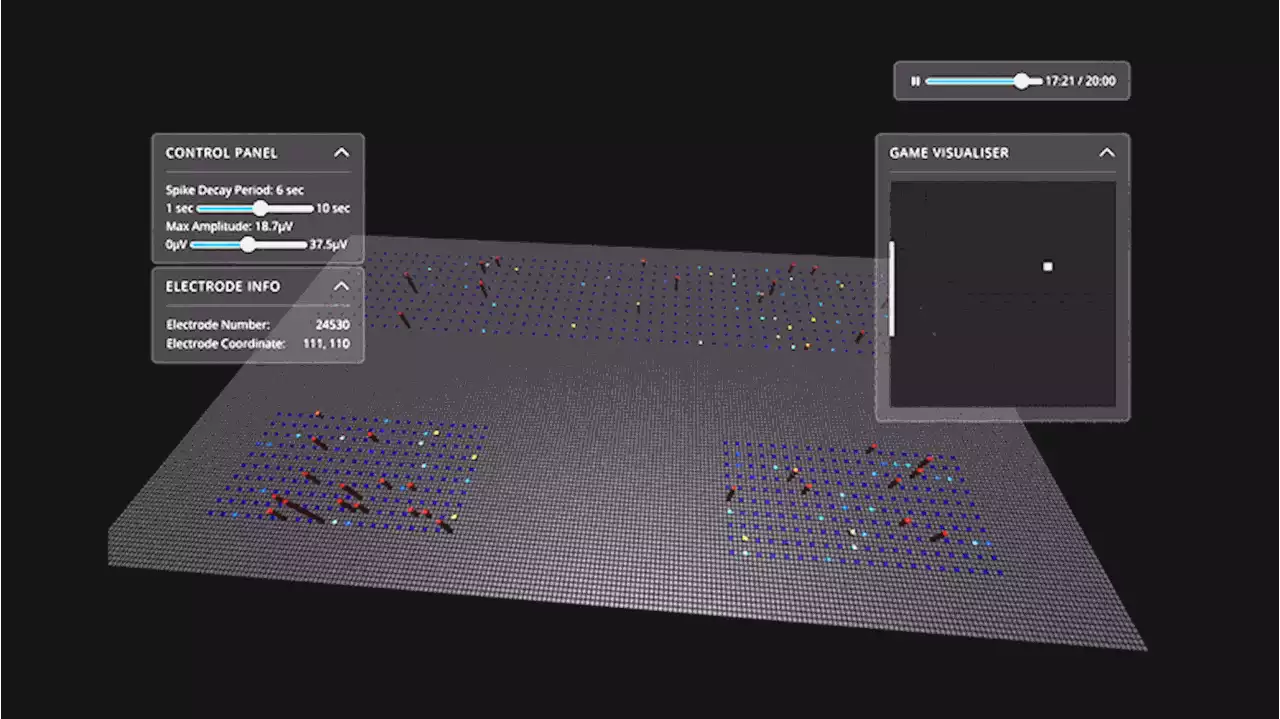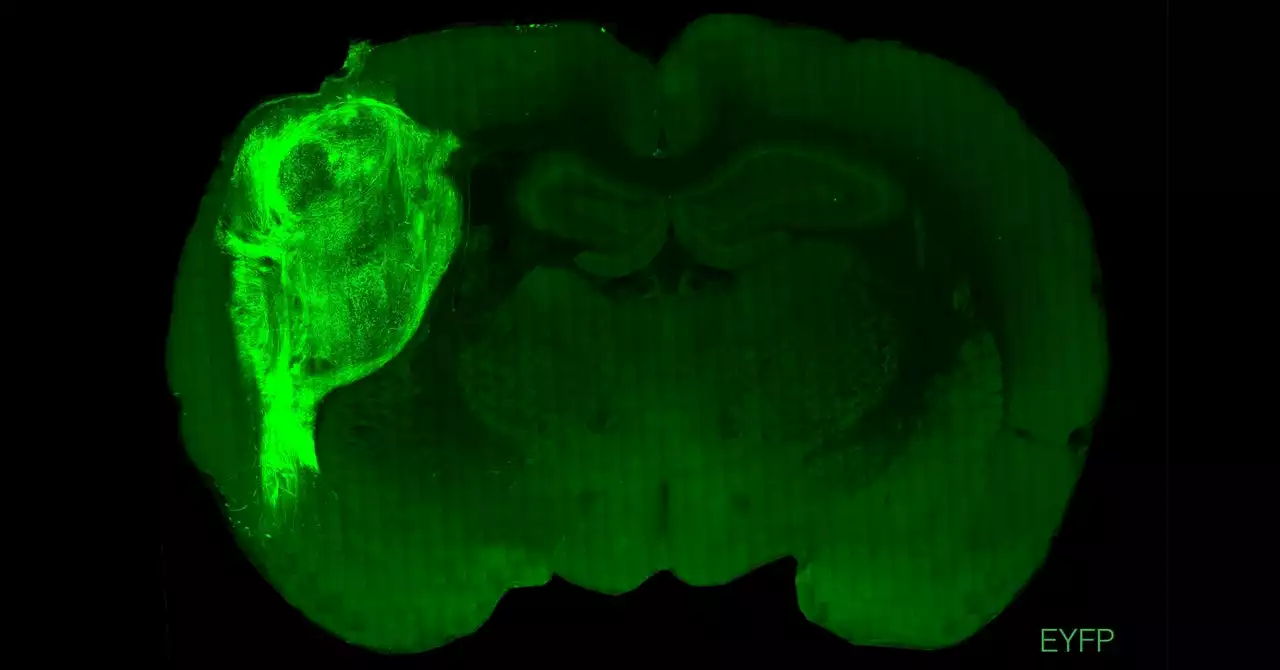Scientists integrated tiny cell clusters called organoids with the animals’ own tissue, a step toward developing sophisticated mini-models of the brain.
of lab-grown human brain tissue were just specks, each measuring a few millimeters in diameter. Researchers at Stanford University made them by cultivating human stem cells into three-dimensional clumps of tissue. Called brain organoids, these simplified structures contain some of the cells and properties of a real human brain, offering insight into development and neurological conditions.
The Stanford team transplanted these clusters of human cells into the somatosensory cortices of newborn rats—the area that processes sensory information, such as touch, from across the body. Over several months, the organoids grew to occupy about one-third of the hemisphere of the rat brains. The research was. “This definitely pushes forward what organoids can do in terms of their functional integration into the brain,” says H.
In a departure from previous studies, Pasca and his colleagues found that the transplanted human neurons grew nerve fibers that extended into the rat brain tissue and formed junctions called synapses between rat neurons. These connections don’t exist in brain organoids grown in a dish, a major limitation that has driven scientists to transplant orgaonids into living animals.
United States Latest News, United States Headlines
Similar News:You can also read news stories similar to this one that we have collected from other news sources.
 'Branches to Chances' helps returning workers turn a new leaf by gardeningFor these hard-working gardeners, a second chance was all they needed to grow fruitful careers.
'Branches to Chances' helps returning workers turn a new leaf by gardeningFor these hard-working gardeners, a second chance was all they needed to grow fruitful careers.
Read more »
 Dolphins and Whales Apparently Sleep With One Eye OpenSleep research shows that some marine mammals have the ability to rest half of their brain at a time, skipping a key sleep stage we see in humans.
Dolphins and Whales Apparently Sleep With One Eye OpenSleep research shows that some marine mammals have the ability to rest half of their brain at a time, skipping a key sleep stage we see in humans.
Read more »
Study Shows Dad’s Brain Changes After Baby Is BornRead more about a new study that suggests a man’s brain is remodeled after the arrival of baby—shrinking in some ways and growing in others to be more empathetic.
Read more »
 Vote for the Mind Science BrainStorm Neuroscience Pitch Competition winnerSPONSORED: Now through Oct. 17, you can vote for the neuroscientist you think is working on the most promising brain research.
Vote for the Mind Science BrainStorm Neuroscience Pitch Competition winnerSPONSORED: Now through Oct. 17, you can vote for the neuroscientist you think is working on the most promising brain research.
Read more »
 Watch Live Human Brain Cells in a Dish Learn To Play PongLive biological neurons show more about how a brain works than AI ever will. Scientists have shown for the first time that 800,000 brain cells living in a dish can perform goal-directed tasks. In this case, they played the simple tennis-like computer game, Pong. The results of the Melbourne-led s
Watch Live Human Brain Cells in a Dish Learn To Play PongLive biological neurons show more about how a brain works than AI ever will. Scientists have shown for the first time that 800,000 brain cells living in a dish can perform goal-directed tasks. In this case, they played the simple tennis-like computer game, Pong. The results of the Melbourne-led s
Read more »
 Repairing the eye - Nature BiotechnologyRepairing the eye: Companies are pursuing interventions to edit, regenerate and reprogram eye tissue to restore lost vision
Repairing the eye - Nature BiotechnologyRepairing the eye: Companies are pursuing interventions to edit, regenerate and reprogram eye tissue to restore lost vision
Read more »
